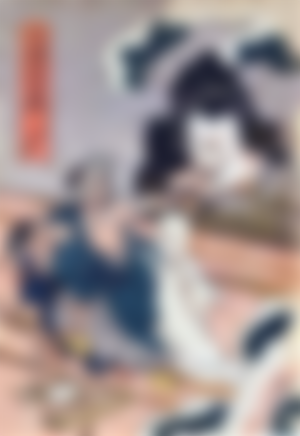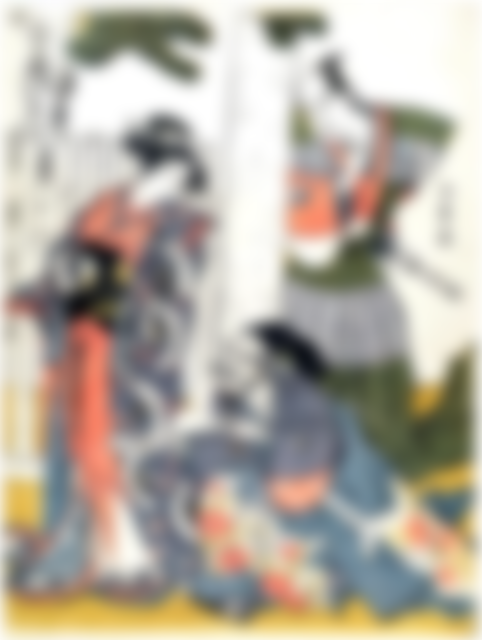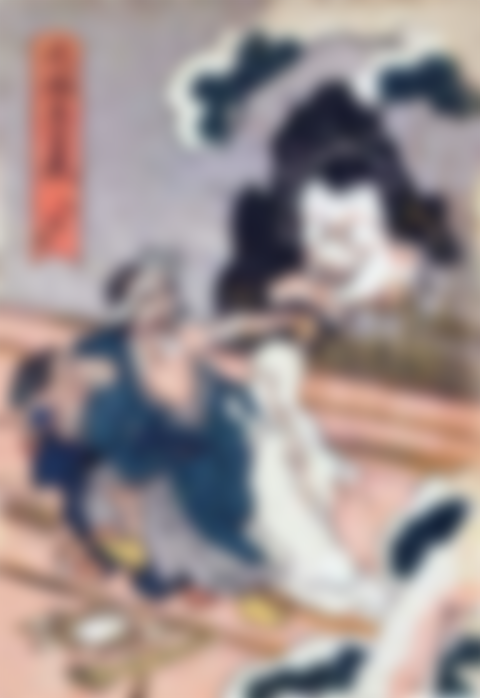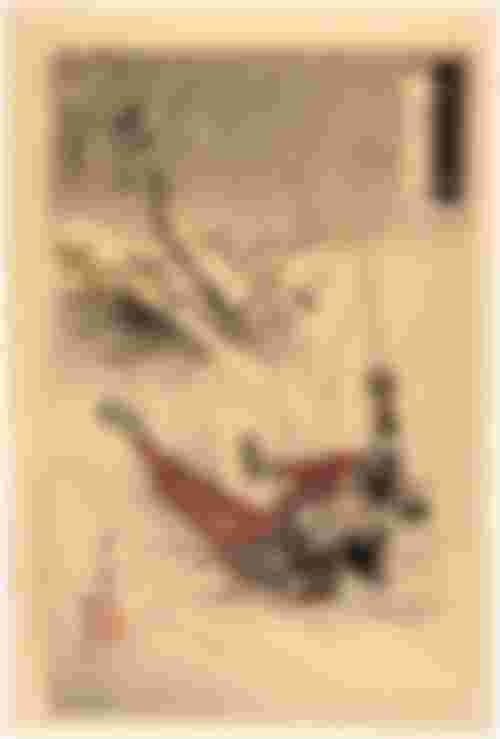Chūshingura - History
Chūshingura is an entire genre in Japanese art and includes as well literature, film and theatre as visual arts. The word is usually translated into English as "The Treasury of Loyal Retainers" and includes stories and pictures based on the famous story of the 47 ronin, a real historical event. Indeed, it is one of the most well-known stories from Japanese history.
A "ronin" is a masterless Samurai, a very troublesome situation. In feudal Japan, one must have a place in the hierarchy to really exist. Without a lord, a samurai was nothing at all.
The 47 ronin were masterless because their daimyō, their feudal lord, Asano Naganori, was ordered by Shogun to commit seppuku, ritual suicide, after which Asano Naganori's feudal lands and estates were completely confiscated. It was a punishment for trying (but fail) to kill Kira Yoshinaka, who was the Shogunate's ceremonial master.
The 47 ronin avenged their lord. On December 15, 1702, they killed Kira Yoshinaka, cut off his head, washed it, and laid it on an altar in front of their dead master's grave, after which they were also ordered by Shogun to commit seppuku. They were buried alongside Asano Naganori.
The tombs of Asano Naganori and the 47 ronin are found in Sengaku-ji, a Zen temple in Tokyo. On 14 December every year they hold a festival there, in memory of the 47 ronin. Here we have Asano Naganori's tomb in Sengaku-ji.

The story is not morally, religiously or even legally uncontroversial. Some argue that the 47 ronin committed a crime, while others believe they fulfilled their duty to the very last, and deserve reverence for this. Still today, it is the popular belief that they ultimately fulfilled what loyalty demands. Loyalty strikes deep strings in Japanese mentality and the story of the 47 ronin constantly returns in Japanese literature, film, theatre, television, visual arts, and so on. It has even been made as opera and ballet.
Chūshingura in Art
The first artistic interpretation of the story was a bunraku play (puppet theatre), Kanadehon Chūshingura, which premiered in Osaka as early as 1748 and came as a kabuki play already the same year. After that, all artistic works based on the event are referred to as "Chūshingura".
Motives from Chūshingura (Treasury of Loyal Retainers/47 ronin) are common in ukiyo-e - often as yakusha-e, with portraits of actors or scenes from theatre plays based on the story
Shunshō was one of the first, perhaps the very first, to introduce Chūshingura into ukiyo-e. He followed Kanadehon Chūshingura quite carefully and made an illustrative image for each act. Initially, that pattern was followed by most artists. However, gradually they left the original story and the theatre play and used Chūshingura as a form, or framework, for completely different artistic purposes. The print below is Act I of Kanadehon Chūshingura. From The Storehouse of Loyal Retainers in Eleven Sheets (Chûshingura jûichimai tsuzuki), 1770, by Katsukawa Shunshō.

One genre was uki-e, perspective images. Very few Kabuki plays turn up in uki-e, but Kanadehon Chūshingura was one, at that the most famous. Chūshingura uki-e came to be a very large genre that almost every ukiyo-e artist with self-esteem had to try. These uki-e have lost the direct contact with kabuki; the scenes are almost realistic, at least in the sense that the term can be understood in "the floating world" (ukiyo-e).
Chūshingura also offers high-quality examples of pure yakusha-e, actor portraits. They are often made against a background of a single colour, so it's not scenes from the play, just pure portraits. Shunei, Kunisada and Kunichika are three examples of artists who made famous series of Chūshingura yakusha-e.
As a form, Chūshingura was also used for various playful associations, analogies and so-called parodies - as mitate-e. There various things are contrasted with certain aspects of Chūshingura, or parallel actions are created. Sometimes they get quite distant from the original, which serves more like a framework for images aiming to show something else. Prominent series were made by - for instance – Utamaro, Kunisada, Eizan, and, not at least, Kuniyoshi, who was an intellectually knowledgeable artist who sometimes made very complex and fanciful mitate-e. Let us look at an example of what I think is the most bizarre Chûshingura series ever made: Bakemono Chûshingura (The Monsters' Chûshingura), by Utagawa Kuniyoshi. It was made about 1836. Below we can see "Act 9".

Biographical series was another subgenre of Chūshingura ukiyo-e. Such a series should include a picture for each hero in Chūshingura, usually 47. Kuniyoshi was the first artist who made a biographical series. It soon became a pretext to depict the human body in action; that is to say, in many different activities, movements, and perspectives. Here is one example, Hazama Jujiro Mitsuoki by Ogata Gekkō. Gekkō made his series 1895-1903. (The lead image is a detail from another print from the same series: Muramatsu Kihei Hidenao.)

If we leave ukiyo-e, we find the story about the 47 ronin turning up in movies. Several Japanese movies have built on that theme, and in 2013 came an American movie based on the same story. However, the latter one was a failure. Yet it shows the fascination derived from this theme, which inspires to art and movies over and over again.
(This article is based on material previously published in Meriondho Leo.)
Copyright © 2020 Meleonymica/Mictorrani. All Rights Reserved.
You find all my articles on Japanese Art & Culture here.
Interested in Japanese culture? Join my community Japanese Art & Cultural History (7c1f).
You find all my writings on Read.Cash, sorted by topic, here.




I watch the movie and it acted exactly as your article. Great one pal encouragement if you got another one update us ,we really wants to know more about Japanese history. I hope one day i got a chance to travel their as a tourist. You're sighted.